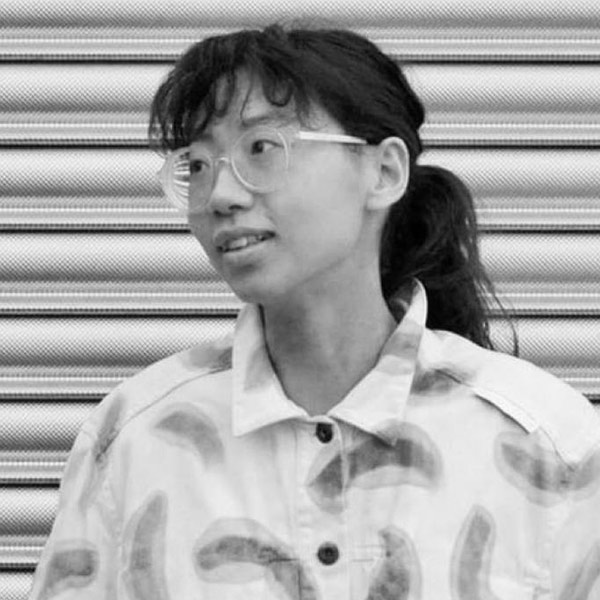Fashion for the Future
by Dian-Jen Lin
Currently, the fashion industry commonly refers to terms such as ‘organic’ or ‘recycled’ as indicators of sustainable practice. However, can we rely on organic farming and recycling to have a livable future on this burning planet?
COVID, Carbon, Fashion
While we wait for carbon neutrality to be negotiated, global temperatures continue to rise. During the pandemic lockdowns, we witnessed a historic reduction in carbon emissions. However, this hiatus in global activity was ineffective in reducing global temperatures, and carbon emissions have started to soar again. Carbon neutrality must be achieved, yet this alone will not actively rectify and restore the ecological harm that we have done in the past and we are not letting nature self-heal either.
In the post-COVID world, fashion brands cannot simply aspire to sell textile products while continuing to exploit nature and vulnerable communities. Brands need a justified reason to exist. The fashion industry contributes to 10% of humanity’s carbon emissions, consumers are buying 60% more clothing than 60 years ago but wearing them for half as long while less than 1% of clothing is recycled, not to mention that 93% of global major brands do not pay their garment workers a living wage.
Why do we still produce & consume fashion if only a few benefit from tiered exploitation? Is it worthwhile to put planetary health before fashion & profit? What kind of future are we voting for when we purchase clothes from the high street?
The answers are obvious, but achieving them is not easy without mental & systematic paradigm shifts. Firstly, we need to acknowledge that change will come to us whether we like it or not, and we all have to choose between self-change or planetary collapse. Secondly, we need innovation, creativity and ingenuity to bring about positive impacts that will regenerate and restore the planet’s social and ecological systems.
Nature Knows Better
In the age of greenhouse gas & pollution overload, nature has developed coping mechanisms to self-heal to an extent. If humanity is not going to help, we can at least leave nature alone. However, environmental destruction is still increasing along with irresponsible capitalistic activities.
Changing our economic value system is imperative for a sustainable future, but it is not going to happen overnight. Instead of coupling environmental abuse with profit gains, we have the power to choose to support nature’s regeneration, restoration & remediation while carrying out activities, as long as we carefully design them to be that way.
By collaborating with nature rather than exploiting or working against it, we can harness the billions of years of evolutionary wisdom embedded in the invisible organisms around us — microbes.
Microbial Superpower
In the kingdom of microorganisms, we can find a lot of potential for our modern-day problems. From plastic-consuming bacteria and radiation-eating fungi to CO2-absorbing algae, there are more and more studies & discoveries on applicable biochemical pathways for compound synthesis or pollution neutralisation being released.
Instead of relying on fossil fuels or animal agriculture, which are very carbon-intensive activities, we can grow microorganisms smartly to phase out some petrochemicals and animal products by creating better and more efficient material flow systems that do not pose an environmental burden and potentially generate benefits to local ecosystems.
We already have mass-manufactured products and compounds that rely on the involvement of microorganisms, such as MSG, but currently, these systems are mostly designed to maximise yield/profit, so they can involve hazardous chemicals throughout the purification/extraction processes and are not necessarily built with environmental/social considerations.
However, if we can prioritise environmental health and ethics to enable bio-remediation and bio-restoration with microorganisms, these commercial activities may reap not only economic but also environmental benefits. Without revolutionising the financial systems and capitalism, this is possibly the most hopeful win-win scenario we can reach now.
There are, still, obstacles involved in applying microbial solutions to one of the most traditional and manual industries — fashion.
Post Carbon Fashion
To identify the space for microbial intervention in the fashion industry, it is vital to assess the carbon flow within the current system. There is an obvious lack of climate positivity input in the life cycles of textiles & fashion objects.
In the lifespan of a garment, every single step (from harvesting/extracting, spinning, colouring, weaving/knitting, distribution and laundering to the end of life) only contributes to more and more carbon emissions. For synthetic fibres, which account for more than 60% of the fibre market, there is no climate positivity input at all. Plant-based fibres are better. However, the only time these fibres actively absorb atmospheric carbon dioxide is during their growth period, which stops once harvested for fibre production.
In a sustainable user scenario, the usage phase of a garment should be the longest during its lifespan because users would care, cherish and mend it for prolonged use & wear. It is also the most meaningful and interactive stage between a garment and a user to build emotional and reciprocal relationships.
As a solution, we aim to input climate positivity not only during the production but also during the user phase. By harnessing the power of microbes, we can create climate-positive fashion that helps us offset our carbon footprints through prolonged care & wear of fashion/textile objects.
The Microbial Alternative
We have developed two main branches of microbiological textile treatments — Microbial Colouration & Photosynthetic Coating™ — as proactive and regenerative pathways to climate-positive fashion.
By working with photosynthetic & locally sourced microbes, we can convert excessive atmospheric carbon dioxide/air pollution into colours and biomass for processing textile products.
Microbial Colouration is to employ microbes that naturally metabolise colours/pigments to dye textiles without involving hazardous chemicals, carcinogens and heavy metals that are usually present in synthetic dyeing processes.
Photosynthetic Coating™ is an integrated microbial living layer that provides textiles with an additional boost of climate positivity into their original life cycle. By adopting a care routine similar to an air plant, users and treated textile products can form a mutualistic symbiosis: the users provide carbon dioxide and textile products offer oxygen.
For our piloting phase, we are in the process of collating longitudinal data to conclude that textiles treated with our processes are absolutely climate positive. However, Photosynthetic Coating™ is the only treatment that presents the potential for textiles to not just mitigate and offset the overall carbon footprint but also contribute positively to the climate during both the production and user phase.
We Are Post Carbon Lab
Post Carbon Lab, founded by Dian-Jen Lin and Hannes Hulstaert, is a collaboration-based social enterprise offering sustainable/regenerative microbial colouration/textile finishes R&D services to textile-based businesses.
With a nucleus of regenerative sustainability & dignity, they aim to foster cross-disciplinary collaborations while lowering the threshold of accessing innovations for small businesses & underprivileged designer communities.
To push the perception of sustainable fashion further, they offer R&D services of pioneering microbiological treatments for textile applications to designers and businesses as proactive and regenerative pathways to climate-positive fashion.
Reframe Our Fashion Reality
With greenwashing an ever-present issue, we struggle to comprehend the sustainability efforts of fashion brands with misleading headlines and fuzzy logic without realising genuine transparency. At times, that only makes us more aware of their negative impacts. It is daunting for fashion brands to initiate change with the fear of scrutiny and condemnation from the media, but it shouldn’t stop them from making small steps in the right direction. Instead, businesses can communicate their footprints and improvement honestly rather than spotlight only the good parts. Nobody is perfect and it is okay if it is still a work-in-progress.
We hope more brands learn how to communicate their sustainability wins successfully, so we can encourage & inspire each other to continue to innovate.
As we move away from net-zero as the ultimate goal and towards regeneration, restoration & remediation, we hope fashion brands can address overconsumption and overproduction and the obsession with infinite financial growth to reframe our current relationship with materials, textiles and fashion.
We can all make little tangible steps to reframe our relationship with fashion and keep an eye on our carbon footprints by living consciously, mindfully and gratefully. By appreciating all the materials, objects & fashion items you already own, considering mending/ swapping/ renting/ thrifting before buying something new & perhaps caring for a living plant-like garment, we can all play our tiny role in ensuring an ecologically positive future for fashion.

Dian-Jen Lin
Dian-Jen Lin is an interdisciplinary designer with the academic rigour of a researcher, the analytical rationality of a scientist and the aesthetic sensitivity of an artist.
She is the co-founder of Post Carbon Lab, a transdisciplinary design research studio focusing on sustainability and dignity.




